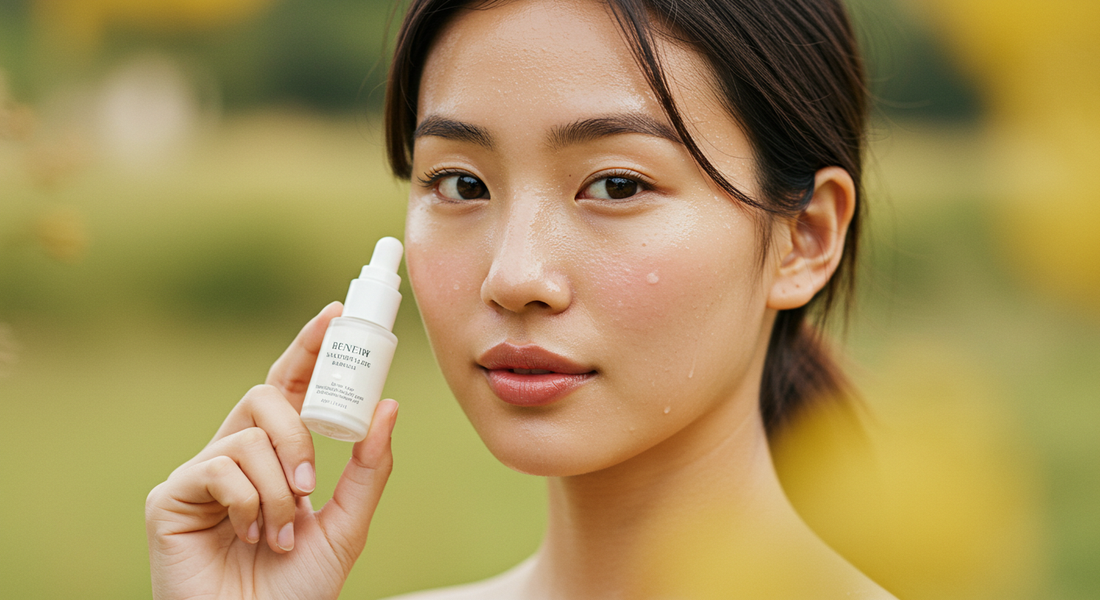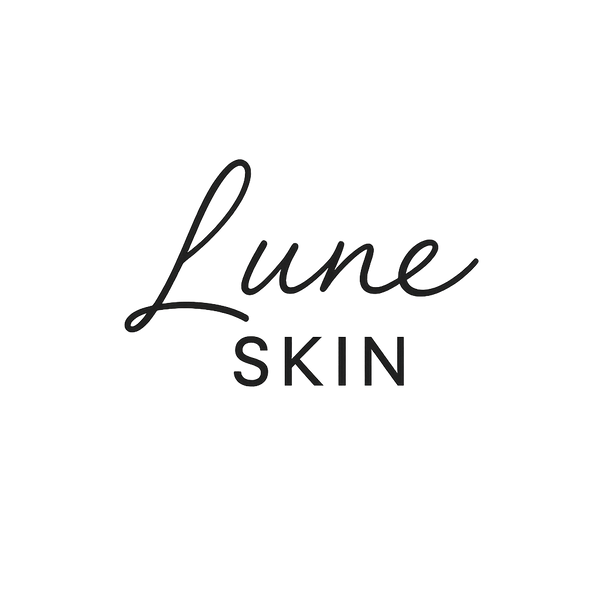
K‑Beauty Secrets for Glass Skin: How to Achieve a Radiant Complexion at Any Age
Share
Introduction: What Is Glass Skin and Why It Matters
In the world of K‑Beauty, “glass skin” has become a hallmark ideal — skin so luminous, translucent, and poreless that it appears as smooth and radiant as glass. This aesthetic is more than just surface glow; it reflects skin that is deeply hydrated, balanced, and healthy from within. The pursuit of glass skin addresses multiple skin concerns: uneven texture, dullness, enlarged pores, and signs of aging.
As we age, our skin’s natural moisture retention and regeneration capacity diminish. Collagen and elastin fibers degrade, leading to fine lines, uneven tone, and a duller look. Adopting a glass skin–oriented routine helps counteract these effects by prioritizing clarity, hydration, and barrier strength. For readers of Lune Skin, this approach aligns naturally with premium skincare that supports long-term luminosity.
In this guide, we’ll walk through the essential pillars of achieving glass skin, how to customize them by age, and tips to keep your complexion glowing year-round.
Pillar 1: The Foundation — Gentle Cleansing & Barrier Protection
Double Cleansing, But Gently
The first step is to remove surface debris, makeup, sunscreen, and pollution without stripping your skin. In K‑Beauty tradition, start with an oil-based cleanser to dissolve oil-based impurities (sunscreen, sebum, makeup), then follow with a low‑pH gentle cleanser to lift away remaining residue. This prevents buildup that can dull skin or clog pores.
Overaggressive cleansing can damage the skin barrier, triggering sensitivity and redness — exactly what undermines the glass effect.
Prioritize the Skin Barrier
Glass skin is achieved not by heavy occlusives but by maintaining a healthy barrier that locks in hydration. Ingredients like ceramides, squalane, lipids, and panthenol help reinforce the barrier. When the barrier is intact, moisture layers stack beautifully instead of evaporating, which is key for that dewy, plump look.
Pillar 2: Layered Hydration — Toners, Essences, Mists
One of the signature techniques in K‑Beauty is multi‑layering water-based products — often called the “7‑Skin Method,” where you layer toner or essence multiple times until the skin feels comfortably hydrated, not tight or sticky. This layering builds a moist base for later products to glide on smoothly.
- First layers should be lightweight, watery or milky in texture.
- Subsequent layers can include more actives like brightening, peptides, or mild hydrators.
- Mist spritzes between layers refresh the skin while helping absorption.
This approach helps skin look bouncy and translucent rather than flat or matte.
Pillar 3: Actives That Support Glow & Youth
To elevate hydration into radiant clarity, targeted actives play a critical role.
Hyaluronic Acid & Hydrating Polymers
These bind water to skin and help maintain suppleness. Using different molecular weights (lightweight + medium) ensures hydration at multiple depths.
Niacinamide & Brightening Agents
Niacinamide (vitamin B3) helps regulate sebum, reduce hyperpigmentation, and refine texture — all of which support a glass-like finish. Mild exfoliants (like AHA or BHA) used judiciously help prevent dullness by sloughing dead cells, but overexfoliation must be avoided.
Peptides & Antioxidants
Peptides, growth factors, and antioxidants (e.g. vitamin C, plant extracts) support collagen and elastin, counteracting aging signs and supporting firmness. These make the glow more youthful, not just superficial.
Fermented & Botanical Extracts
K-Beauty often integrates fermented ingredients (e.g. galactomyces, bifida ferment) and botanicals like ginseng, centella, or rice extracts that offer nourishment, soothing, and skin recovery. These ingredients merge tradition with efficacy.
Pillar 4: Moisturization + Sealing
A well-formulated moisturizer is key to sealing in hydration and smoothing the skin surface. Gel creams, emulsion-cream hybrids, or airy creams work well, especially when they incorporate humectants + barrier lipids.
In the daytime, follow with a lightweight sunscreen that offers protection without matte flattening. Look for formulas that support glow rather than fight shine.
At night, you can layer a richer cream or sleeping pack on top of your active serums to support overnight regeneration.
Pillar 5: Lifestyle & Consistency
The appearance of glass skin doesn’t come from one product — it comes from consistent care and healthy lifestyle support.
- Stay well-hydrated: internal hydration supports the skin’s outer glow.
- Prioritize sleep and stress management: poor sleep impairs barrier repair and accelerates aging.
- Diet rich in antioxidants, omega fatty acids, and phytonutrients complements your skincare.
- Avoid excessive sun exposure and always use sufficient SPF — UV damage undermines everything.
- Give your skin time: visible transformation may take weeks; patience is part of the ritual.
Age‑Adapted Adjustments for Glass Skin
In Your 20s
Focus mostly on prevention and habit formation. Gentle cleansing, hydration layers, sunscreen, and introducing a mild brightening or antioxidant serum are sufficient. No need for heavy actives yet.
In Your 30s
Begin introducing peptides, more robust antioxidants (like stable vitamin C), and possibly a light retinoid (if skin tolerates) to support collagen. Hydration layers become more vital to counter early signs of dehydration.
In Your 40s and Beyond
Support barrier repair aggressively. Use richer lipid formulations at night, and prioritize peptides, barrier lipids, ceramides, and recovery serums. Actives should be moderated and introduced carefully to avoid irritation. Glass skin at this age leans more on inner health, gentle innovation, and barrier integrity.
Common Pitfalls & How to Avoid Them
- Overexfoliation: Reduces barrier resilience, causing flaking or irritation.
- Skipping patch tests: Strong actives may trigger reactions — always test on a small area first.
- Relying solely on makeup: The glass effect should originate from the skin, not from layering highlighters to mask underlying issues.
- Inconsistency: Skipping steps or days undermines the cumulative effect of a multi-step routine.
- Using heavy, occlusive creams in hot climates: Can clog pores or flatten your glow.
Tips for Lune Skin Customers & Product Integration
At Lune Skin, you can guide customers toward building their own glass skin set:
- Offer a gentle oil cleanser and hydrating foaming cleanser as combo starters
- Provide a lightweight hydration toner or essence suitable for all skin types
- Feature serums with niacinamide, peptides, and brightening botanicals
- Curate moisturizers in multiple textures to fit skin types and ages
- Include a daily sunscreen that supports dewiness rather than mattifying it
Encourage customers to build step-by-step routines tailored to their skin’s age, condition, and sensitivity. Transparent labeling of actives and gentle formulations can build trust.
Conclusion
Achieving glass skin is not a trend — it’s a long-term philosophy rooted in hydration, barrier health, and smart layering. Across every decade, the luminous, dewy, translucent look is attainable through consistent care, age‑adapted routines, and quality ingredients.
By positioning your offerings and content this way, Lune Skin can help readers and customers not just chase glow, but sustain it — making radiant skin a signature, not a fad.
